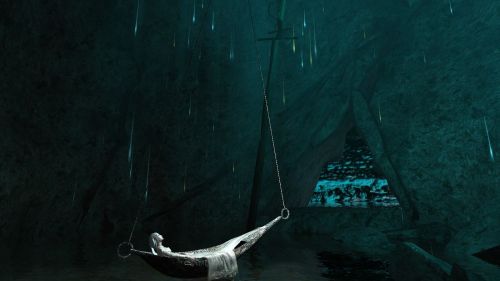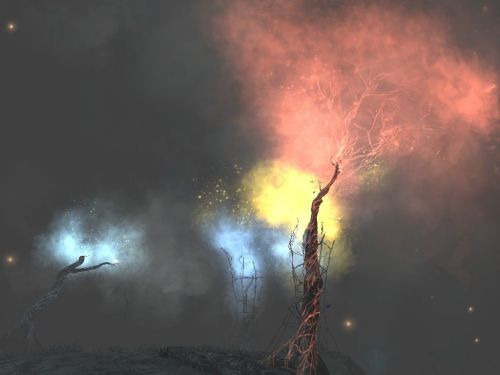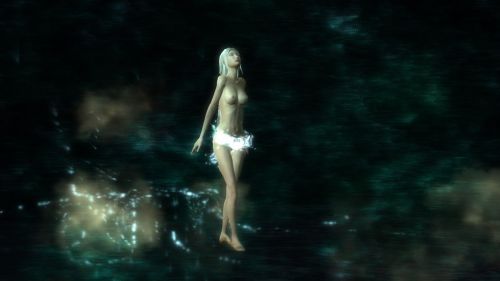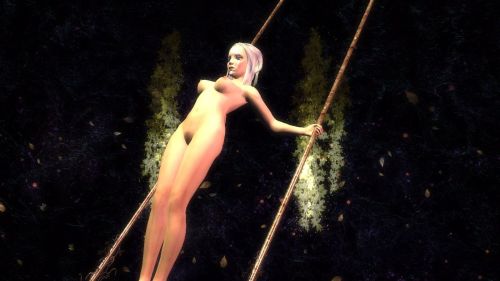[Quickie Nr. 005] Turgor, Tension, The Void Review
[Quickie Nr. 005] Turgor, Tension, The Void Review
Review - posted by VentilatorOfDoom on Thu 1 September 2016, 09:17:30
Tags: Ice-Pick Lodge; Quickie; Tension; The Void; TurgorWhile we're waiting for the next Gamescom report, let's insert a brief pentaquickie. With the fifth entry to our prestigious Quickie review series Konjad takes us on a voyage through Turgor, Tension, and The Void, different versions of a game published by Ice-Pick Lodge. Technically not an RPG the game nevertheless managed to win Konjad's affection.
Is the game really that good or is Konjad just a young, impressionable nerd swayed by the female nudity in this game? Discuss!
Read the full article: [Quickie Nr. 005] Turgor, Tension, The Void Review
Is the game really that good or is Konjad just a young, impressionable nerd swayed by the female nudity in this game? Discuss!
Read the full article: [Quickie Nr. 005] Turgor, Tension, The Void Review
Turgor, Tension, The Void Review
by Konjad
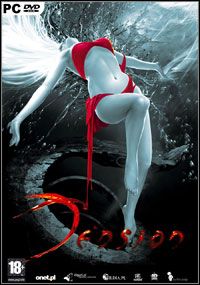


Ice-Pick Lodge is responsible for writing four games so far. Their English versions are known as Pathologic, The Void, Cargo! - The Quest for Gravity, and Knock-Knock. I have already covered Pathologic in one of my quickies and now I will describe The Void to you, dear readers. Before I begin, however, I want you to know that there are two distinct versions of the game. Turgor (Russian) and Tension (Polish) are the original version of the game, whereas The Void (German and English) is a remastered edition. This review will cover both versions as the differences between them are important and the newer version is not necessarily the better one.
I have played the Polish and English versions and I will use different colors in this review to isolate the parts describing solely the original edition and the parts true only to the westernized one, so you will instantly know when I write about either the original or the remastered edition. I shall employ an emerald color when writing about the Polish version and an amber color when writing about the English version. If neither of these colors is used then both versions are described. Because the game has three different titles I will use them alternately, but unless the text is colorized I am describing all versions. Now that we have these preparations behind us, let me begin the review.
Leave O leave to my sorrows
Here I’ll sit & fade away
Till I’m nothing but a spirit
And I lose this form of clay
Then if chance along this forest
Any walk in pathless ways
Thro the gloom he'll see my shadow
Hear my voice upon the Breeze
William Blake’s poem, which can be heard in the game.
You install The Void, and run it. You notice it has a SecuROM. The main menu appears and you click to start a new game…. You stand on a tiny barren island with a lonely tree in the middle of it. A female voice tells you to pick up a heart, which is a glowing ball near the tree. You do as asked, then follow the voice to the tree, where you'll meet the girl whose voice you heard. In the Polish version the conversation with the girl begins right away.
The first thing the girl says is:
This is the desert on the threshold of Death.
I think it’s somewhere underground – but not deep. And around it – emptiness…
Oto czyśćca pustkowie,
W brzuchu ziemi, lecz pod skórą ledwie…
Wokół pustka I wieczny niedosyt, wstrętna żarłoczność większa niż wszystko inne…
Nienawiść odbiera duszy cały żar… Pustka… Trwoga… Niebyt…
[It’s a purgatory’s void,
In earth’s belly, but just under the skin…
Around emptiness and eternal hunger, repugnant voraciousness greater than anything else…
Hatred deprives the soul of its entire ardor… Emptiness… Fright… Nonentity...]
If you look carefully enough you might notice a slight difference between the two lines in the editions of the game. I played the Polish version after the English one… and it completely blew my mind how much better written it was. After the above, the girl says a lot more in an exquisite language in Polish, but in a much more direct and simple way in English. It isn't so in the beginning of the game only. The whole Turgor, which has a quite decent amount of text, is written a lot better in the original edition than in the remastered one. If you know Russian or Polish don’t even bother to ponder which version of the game to play. The German/English edition is an extreme case of dumbing down a product, at least when it comes to the text.
The girl tells you to gather color around her island and sends you into the water. When you plunge in the black water surrounding the island some kind of map appears. The same girl explains to you what it is and how to move around it, as well as how to unlock other areas. This map, called the void, allows you to travel between various hubs. However, there is a clock ticking – the whole game is put around the idea that the player has a limited time to reach the ending of the game. In addition, a lot of events happen only after an appropriate amount of time has passed. The time passes only in the void though, so when you wander around the various locations you need not hurry. This has a huge influence on the gameplay because you have to plan when and where to go, especially since you also need to manage colors.
The colors are everything in this game. All your actions are done with painting signs using colors, actions such as talking with sisters, fighting or using abilities. At the beginning of the game you get: Two glyphs — one for donating color and another one for talking. One glyph for donating color. The glyph for talking is called “Wywoływacz” and allows the player to gather a lot of additional information from the sisters. They will tell you about their thoughts, and also share information about the void, brothers, predators and other sisters. The glyph called “Jałmużna” / “Donor” allows you to give color to girls and trees. Throughout the game the player is able to gather more hearts, and in consequence have more glyphs, which also means more skills. Most of the endings also require you to have collected all of the hearts.
These trees I mentioned are very useful as they allow the player to grow gardens of colors. You won’t find all the colors you need, but you may use trees to grow them. Each sister has two favorite colors and when you feed her with those she tells you something, which quite often is a manipulation or a lie, she awards you with a cutscene where she moves around her naked body, and unlocks more areas where you may go to reach other sisters. However, the more colors you feed a sister, the more monsters will appear in her realm. To give a color you have to collect it first, then put it in your heart, afterwards you need to harvest it from your lymphatic vessels, and only then you can share your colors. Moreover, each color has its own unique properties and will grant you benefits when your heart is filled with it, for example azure will make you move faster. To make matters more tense, the colors slowly vanish from the player’s hearts each second he spends in the void.
After some time, Brothers will appear in the realm, they are the sisters' guardians. Sisters want to devour colors to reach the status of a turgor and go to the world above, albeit only one sister can do it as she will require all the colors of the void. Brothers believe that there is no world above and that the void is the highest world – a heaven. They feed sisters with little colors – enough for them to survive, but not more. They welcome the player as a new brother and teach him commandments. They might also give quests to the player if they deem it necessary, such as killing a sister who they consider a danger to the void or killing predators hunting the realm.
Some of the Brothers are friendly towards the player, others are distrusting. Many sisters will manipulate the player, while some may genuinely care about him. You must know that the game has a lot of female nudity and some girls move very suggestively, and yet at the same time the game keeps up the atmosphere of hostility and horror, albeit there isn’t much physical violence shown in The Void, both physical and psychological violence can mostly be perceived in the brother-sister relationships. Everything is up to the player’s interpretation though – characters contradict each other, and there’s never a clear clarification of anything.
The game doesn’t insult the player’s intelligence, it assumes you are a thinking being, which is a welcome deviation from most modern games. The mix of poems into the dialogues is a gorgeous idea which makes the events even more open to interpretation. The player character never says anything – he is literally a mute in the game’s setting. He is not able to utter a single word, therefore all conversations are monologues directed at the player, who can listen to Sisters, Brothers and the different colors’ voices. Each language version has its own voice-overs and all are done very well. I have to remark that the characters in this game are exceptionally portrayed. I don’t think I've ever played a game which would put such a heavy focus on personalities. Each Sister or Brother is different, even the voices of colors are unique! It’s easy to find your… favorite Sister, both in shape and personality too There are some minor differences in the look of Brothers between the editions of the game, but they are minor and don’t seem to matter. The remastered version has lip synchronization – characters’ lips move when they speak, whereas in the original edition lips are static and always closed.
There are some minor differences in the look of Brothers between the editions of the game, but they are minor and don’t seem to matter. The remastered version has lip synchronization – characters’ lips move when they speak, whereas in the original edition lips are static and always closed.
Awash in flowers, colors riot,
Descending slowly from a hill,
She nears and stars…
Who are you?
- Maya.
I am so grateful that you're here.
Your lambent eyes are beaming. Name is -
Elusive as an unfinished dream.
I am bedazzled by your phantoms
And by sweltering sunbeams.
Come in and be.
- Maximilian Voloshin

It is difficult to fit the game in any genre. It has elements of many different kinds of games, but it isn’t any in particular. The gameplay is quite unique, but if I had to come up with a moniker I'd say “story driven survival painting game”. After all, survival is the hardest thing in The Void and the game puts heavy focus on characters and the story, albeit it doesn’t forget that gameplay is an important factor. Usually I'm not a fan of survival games as they are very repetitive and get easy once you learn them once. Tension might be somewhat repetitive, but the game succeeds at throwing new events and challenges at the player from time to time, so it doesn’t get boring.
Moreover, it doesn’t become easier during the second or even third playthrough as there are different endings you may want to achieve – getting one of the difficult endings requires a good knowledge of the game from the very beginning, hence such endings most likely cannot be obtained during the first playthrough. Thus, Turgor should give you enough fun even in your second or third playthroughs.
The combat in this game also relies on painting glyphs. Killing some minor creatures here and there is easy, but the real challenge in these fights is not wasting too many colors since they are useful for other things. Combating Brothers, on the other hand, is difficult and each of these fights is different. Sisters do not defend themselves, so if the player decides to kill them they do not oppose him. Combat in The Void can be avoided altogether if you wish so, and it is possible to finish the game without killing a single being.
The graphics in this game are wonderful. It’s the most beautiful game I have ever seen. The locations are like gorgeous and surreal paintings, each of them could make an excellent wallpaper too. I noticed that some locations differ in colors between Turgor’s versions, but it’s not a significant difference. Sisters are beauties that please the eye, brothers are monstrosities with half-mechanical bodies. There is a lot of attention to detail, although occasionally you might encounter some minor texture bugs. Just look at the screenshots and see how resplendent those graphics are. The ambient sound is also great, from the unsettling sounds adding to the dark atmosphere to the quiet voices reading poems in the background that you can only hear when you turn volume up. The music fits the game atmosphere perfectly. Some tracks I enjoyed so much that I continued to listen to them when I was not playing the game.
The Void is the most unique and enjoyable game I have ever played. Visuals are astounding, the soundtrack is a delight, the gameplay is engaging and the dialogues are enchanting. Tension gives so much joy that after finishing one playthrough I instantly began another one to reach a different ending that is more difficult to achieve. I have an impression, however, that this game is not for everyone. Nonetheless, those who will be sucked into it will be held spellbound. To appreciate this game you must have an open mind towards unusual games, enjoy gloomy settings and imbibe poetry. In my opinion, whatever your taste in games is, Turgor deserves your time to give it an honest try. Do keep in mind, however, that it is one of the most difficult games I have ever played and the player is constantly faced with a challenge to stay alive and to cultivate enough colors for himself and for the sisters. I only completed the game successfully during my fourth playthrough, failing the first three attempts. This might discourage a lot of people considering most modern games are made to be completed without much difficulty in the very first try.
by Konjad



Ice-Pick Lodge is responsible for writing four games so far. Their English versions are known as Pathologic, The Void, Cargo! - The Quest for Gravity, and Knock-Knock. I have already covered Pathologic in one of my quickies and now I will describe The Void to you, dear readers. Before I begin, however, I want you to know that there are two distinct versions of the game. Turgor (Russian) and Tension (Polish) are the original version of the game, whereas The Void (German and English) is a remastered edition. This review will cover both versions as the differences between them are important and the newer version is not necessarily the better one.
I have played the Polish and English versions and I will use different colors in this review to isolate the parts describing solely the original edition and the parts true only to the westernized one, so you will instantly know when I write about either the original or the remastered edition. I shall employ an emerald color when writing about the Polish version and an amber color when writing about the English version. If neither of these colors is used then both versions are described. Because the game has three different titles I will use them alternately, but unless the text is colorized I am describing all versions. Now that we have these preparations behind us, let me begin the review.
Leave O leave to my sorrows
Here I’ll sit & fade away
Till I’m nothing but a spirit
And I lose this form of clay
Then if chance along this forest
Any walk in pathless ways
Thro the gloom he'll see my shadow
Hear my voice upon the Breeze
William Blake’s poem, which can be heard in the game.
You install The Void, and run it. You notice it has a SecuROM. The main menu appears and you click to start a new game…. You stand on a tiny barren island with a lonely tree in the middle of it. A female voice tells you to pick up a heart, which is a glowing ball near the tree. You do as asked, then follow the voice to the tree, where you'll meet the girl whose voice you heard. In the Polish version the conversation with the girl begins right away.
The first thing the girl says is:
This is the desert on the threshold of Death.
I think it’s somewhere underground – but not deep. And around it – emptiness…
Oto czyśćca pustkowie,
W brzuchu ziemi, lecz pod skórą ledwie…
Wokół pustka I wieczny niedosyt, wstrętna żarłoczność większa niż wszystko inne…
Nienawiść odbiera duszy cały żar… Pustka… Trwoga… Niebyt…
[It’s a purgatory’s void,
In earth’s belly, but just under the skin…
Around emptiness and eternal hunger, repugnant voraciousness greater than anything else…
Hatred deprives the soul of its entire ardor… Emptiness… Fright… Nonentity...]
If you look carefully enough you might notice a slight difference between the two lines in the editions of the game. I played the Polish version after the English one… and it completely blew my mind how much better written it was. After the above, the girl says a lot more in an exquisite language in Polish, but in a much more direct and simple way in English. It isn't so in the beginning of the game only. The whole Turgor, which has a quite decent amount of text, is written a lot better in the original edition than in the remastered one. If you know Russian or Polish don’t even bother to ponder which version of the game to play. The German/English edition is an extreme case of dumbing down a product, at least when it comes to the text.
The girl tells you to gather color around her island and sends you into the water. When you plunge in the black water surrounding the island some kind of map appears. The same girl explains to you what it is and how to move around it, as well as how to unlock other areas. This map, called the void, allows you to travel between various hubs. However, there is a clock ticking – the whole game is put around the idea that the player has a limited time to reach the ending of the game. In addition, a lot of events happen only after an appropriate amount of time has passed. The time passes only in the void though, so when you wander around the various locations you need not hurry. This has a huge influence on the gameplay because you have to plan when and where to go, especially since you also need to manage colors.
The colors are everything in this game. All your actions are done with painting signs using colors, actions such as talking with sisters, fighting or using abilities. At the beginning of the game you get: Two glyphs — one for donating color and another one for talking. One glyph for donating color. The glyph for talking is called “Wywoływacz” and allows the player to gather a lot of additional information from the sisters. They will tell you about their thoughts, and also share information about the void, brothers, predators and other sisters. The glyph called “Jałmużna” / “Donor” allows you to give color to girls and trees. Throughout the game the player is able to gather more hearts, and in consequence have more glyphs, which also means more skills. Most of the endings also require you to have collected all of the hearts.
These trees I mentioned are very useful as they allow the player to grow gardens of colors. You won’t find all the colors you need, but you may use trees to grow them. Each sister has two favorite colors and when you feed her with those she tells you something, which quite often is a manipulation or a lie, she awards you with a cutscene where she moves around her naked body, and unlocks more areas where you may go to reach other sisters. However, the more colors you feed a sister, the more monsters will appear in her realm. To give a color you have to collect it first, then put it in your heart, afterwards you need to harvest it from your lymphatic vessels, and only then you can share your colors. Moreover, each color has its own unique properties and will grant you benefits when your heart is filled with it, for example azure will make you move faster. To make matters more tense, the colors slowly vanish from the player’s hearts each second he spends in the void.
After some time, Brothers will appear in the realm, they are the sisters' guardians. Sisters want to devour colors to reach the status of a turgor and go to the world above, albeit only one sister can do it as she will require all the colors of the void. Brothers believe that there is no world above and that the void is the highest world – a heaven. They feed sisters with little colors – enough for them to survive, but not more. They welcome the player as a new brother and teach him commandments. They might also give quests to the player if they deem it necessary, such as killing a sister who they consider a danger to the void or killing predators hunting the realm.
Some of the Brothers are friendly towards the player, others are distrusting. Many sisters will manipulate the player, while some may genuinely care about him. You must know that the game has a lot of female nudity and some girls move very suggestively, and yet at the same time the game keeps up the atmosphere of hostility and horror, albeit there isn’t much physical violence shown in The Void, both physical and psychological violence can mostly be perceived in the brother-sister relationships. Everything is up to the player’s interpretation though – characters contradict each other, and there’s never a clear clarification of anything.
The game doesn’t insult the player’s intelligence, it assumes you are a thinking being, which is a welcome deviation from most modern games. The mix of poems into the dialogues is a gorgeous idea which makes the events even more open to interpretation. The player character never says anything – he is literally a mute in the game’s setting. He is not able to utter a single word, therefore all conversations are monologues directed at the player, who can listen to Sisters, Brothers and the different colors’ voices. Each language version has its own voice-overs and all are done very well. I have to remark that the characters in this game are exceptionally portrayed. I don’t think I've ever played a game which would put such a heavy focus on personalities. Each Sister or Brother is different, even the voices of colors are unique! It’s easy to find your… favorite Sister, both in shape and personality too
Awash in flowers, colors riot,
Descending slowly from a hill,
She nears and stars…
Who are you?
- Maya.
I am so grateful that you're here.
Your lambent eyes are beaming. Name is -
Elusive as an unfinished dream.
I am bedazzled by your phantoms
And by sweltering sunbeams.
Come in and be.
- Maximilian Voloshin

It is difficult to fit the game in any genre. It has elements of many different kinds of games, but it isn’t any in particular. The gameplay is quite unique, but if I had to come up with a moniker I'd say “story driven survival painting game”. After all, survival is the hardest thing in The Void and the game puts heavy focus on characters and the story, albeit it doesn’t forget that gameplay is an important factor. Usually I'm not a fan of survival games as they are very repetitive and get easy once you learn them once. Tension might be somewhat repetitive, but the game succeeds at throwing new events and challenges at the player from time to time, so it doesn’t get boring.
Moreover, it doesn’t become easier during the second or even third playthrough as there are different endings you may want to achieve – getting one of the difficult endings requires a good knowledge of the game from the very beginning, hence such endings most likely cannot be obtained during the first playthrough. Thus, Turgor should give you enough fun even in your second or third playthroughs.
The combat in this game also relies on painting glyphs. Killing some minor creatures here and there is easy, but the real challenge in these fights is not wasting too many colors since they are useful for other things. Combating Brothers, on the other hand, is difficult and each of these fights is different. Sisters do not defend themselves, so if the player decides to kill them they do not oppose him. Combat in The Void can be avoided altogether if you wish so, and it is possible to finish the game without killing a single being.
The graphics in this game are wonderful. It’s the most beautiful game I have ever seen. The locations are like gorgeous and surreal paintings, each of them could make an excellent wallpaper too. I noticed that some locations differ in colors between Turgor’s versions, but it’s not a significant difference. Sisters are beauties that please the eye, brothers are monstrosities with half-mechanical bodies. There is a lot of attention to detail, although occasionally you might encounter some minor texture bugs. Just look at the screenshots and see how resplendent those graphics are. The ambient sound is also great, from the unsettling sounds adding to the dark atmosphere to the quiet voices reading poems in the background that you can only hear when you turn volume up. The music fits the game atmosphere perfectly. Some tracks I enjoyed so much that I continued to listen to them when I was not playing the game.
The Void is the most unique and enjoyable game I have ever played. Visuals are astounding, the soundtrack is a delight, the gameplay is engaging and the dialogues are enchanting. Tension gives so much joy that after finishing one playthrough I instantly began another one to reach a different ending that is more difficult to achieve. I have an impression, however, that this game is not for everyone. Nonetheless, those who will be sucked into it will be held spellbound. To appreciate this game you must have an open mind towards unusual games, enjoy gloomy settings and imbibe poetry. In my opinion, whatever your taste in games is, Turgor deserves your time to give it an honest try. Do keep in mind, however, that it is one of the most difficult games I have ever played and the player is constantly faced with a challenge to stay alive and to cultivate enough colors for himself and for the sisters. I only completed the game successfully during my fourth playthrough, failing the first three attempts. This might discourage a lot of people considering most modern games are made to be completed without much difficulty in the very first try.
There are 20 comments on [Quickie Nr. 005] Turgor, Tension, The Void Review





